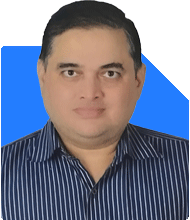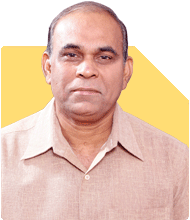40 with 20L Savings - How to Invest 25k Monthly?
Milind Vadjikar |1187 Answers |Ask -Follow
Insurance, Stocks, MF, PF Expert - Answered on Apr 15, 2025
He has a mechanical engineering degree from Government Engineering College, Sambhajinagar, and an MBA in international business from the Symbiosis Institute of Business Management, Pune.
With over 16 years of experience in stock investments, and over six year experience in investment guidance and support, he believes that balanced asset allocation and goal-focused disciplined investing is the key to achieving investor goals.... more

I'm 40 years old with 20 lakh in savings and the ability to invest 25,000 per month. My primary goal is long-term wealth creation, possibly targeting financial freedom or building a substantial corpus for retirement, my child's education, or other future needs. I'd like to understand how I can best structure my investments to maximize returns while balancing risk. Should I focus on mutual funds, stocks, fixed income instruments, or a combination of these? What asset allocation would be ideal for someone my age, and how should I adjust it over time? Also, are there any tax-saving strategies I should consider along the way?
You may start a monthly sip of 12.5 K each into a flexicap type mutual fund and a multi asset allocation type mutual fund.
You may select any fund from the top performance quartile in the respective categories.
Assuming modest return of 10% it may grow into a sum of around 1.91 Cr after 20 years.
These funds will manage the asset allocation for you depending on market scenario so no tweaking required to be done at your end.
As you reach closer to your goal the gains made should be transferred to safe heaven to avoid market volatility impact.
Happy Investing;
You may like to see similar questions and answers below
Ramalingam Kalirajan |8284 Answers |Ask -Follow
Mutual Funds, Financial Planning Expert - Answered on Apr 25, 2024
Ramalingam Kalirajan |8284 Answers |Ask -Follow
Mutual Funds, Financial Planning Expert - Answered on Jul 30, 2024
Milind Vadjikar |1187 Answers |Ask -Follow
Insurance, Stocks, MF, PF Expert - Answered on Oct 22, 2024
Ramalingam Kalirajan |8284 Answers |Ask -Follow
Mutual Funds, Financial Planning Expert - Answered on Jan 28, 2025
Nayagam P P |4453 Answers |Ask -Follow
Career Counsellor - Answered on Apr 23, 2025
Nayagam P P |4453 Answers |Ask -Follow
Career Counsellor - Answered on Apr 23, 2025
Radheshyam Zanwar |1554 Answers |Ask -Follow
MHT-CET, IIT-JEE, NEET-UG Expert - Answered on Apr 23, 2025
Radheshyam Zanwar |1554 Answers |Ask -Follow
MHT-CET, IIT-JEE, NEET-UG Expert - Answered on Apr 23, 2025
Radheshyam Zanwar |1554 Answers |Ask -Follow
MHT-CET, IIT-JEE, NEET-UG Expert - Answered on Apr 23, 2025
Dr Nagarajan Jsk |335 Answers |Ask -Follow
NEET, Medical, Pharmacy Careers - Answered on Apr 23, 2025
Dr Nagarajan Jsk |335 Answers |Ask -Follow
NEET, Medical, Pharmacy Careers - Answered on Apr 23, 2025
Milind Vadjikar |1187 Answers |Ask -Follow
Insurance, Stocks, MF, PF Expert - Answered on Apr 23, 2025
Ramalingam Kalirajan |8284 Answers |Ask -Follow
Mutual Funds, Financial Planning Expert - Answered on Apr 23, 2025
Ramalingam Kalirajan |8284 Answers |Ask -Follow
Mutual Funds, Financial Planning Expert - Answered on Apr 23, 2025





















